Jaane Bhi Do Yaaro is a 1983 Hindi film directed by Kundan Shah. It is a comical satire on the corruption which is rampant in India and holds a cult status in Hindi Cinema, with a dedicated fan following.
Cast
- Naseeruddin Shah ——- Vinod Chopra
- Ravi Baswani ————- Sudhir Mishra
- Om Puri ——————– Ahuja
- Pankaj Kapoor ———— Tarneja
- Bhakti Barve ————– Shobha Sen
- Satish Shah —————- D’Mello
- Neena Gupta ————– Ahuja’s Secretary Priya
- Satish Kaushik ———— Tarneja’s Assistant Ashok
- Deepak Qazir ————– Srivastav
- Vidu Vinod Chopra —— Photographer/ Dushashan
- Rajesh Puri —————- Asst Editor Kamdar
Crew
- Direction —————— Kundan Shah
- Production —————- NFDC
- Story and Screenplay — Sudhir Mishra, Kundan Shah
- Dialogues —————— Ranjit Kapoor, Satish Kaushik
- Music ———————- Vanraj Bhatia
- Cinematography ——— Binod Pradhan
- Editing ——————— Renu Saluja
Story
Vinod and Sudhir are two photography enthusiasts, 50% partners in the Is shaher ka sabse beautiful Beauty Studio somewhere near Haji Ali in Mumbai. They have just one small problem – there are no customers and whatever few are there, are lured by a rival photography studio. Undeterred, the young photographers keep up their pursuit of success.
Enters Shobha Ji, the firebrand editor of a newspaper Khabardar, who gives them a photographic assignment – to expose the nexus between corrupt Municipal Commissioner D’Mello and Tarneja, a big builder. However unknown to them, D’Mello is double-dealing with another builder Ahuja, who is a rival of Tarneja.
As Vinod and Sudhir continue with their little investigative Photojournalism, they decide to enter a photography competition which has lucrative prize money of 5,000 Rupees. They take photographs all over the city and while developing the prints in their lab, find that one of the photographs has captured a murder in a park, the murderer none other than Tarneja. The body disappears and they are not able to ascertain its identity.
Information comes that D’Mello has died of a terminal disease and the duo turns up at his memorial service. It is there that they find that the man Tarneja killed was actually D’Mello. They dig up the coffin and retrieve the body of D’Mello, and give the information to Shobha Ji. However, instead of acting upon this news, Shobha starts blackmailing Tarneja. Realizing that Shobha Ji is up to no good, they escape with D’Mello’s body, but not before setting up a whole lot of people after them. Thus starts a hilarious cat and mouse game reaching its crescendo in the iconic climax scene.
Commentary
Comedy is not always happy. If you have seen Chaplin’s ‘The Kid‘, you will know what I mean. In the hands of an auteur, especially one with an acute sense of politics, a comedy can turn into a very dark and potent means to shake the sensibilities of the viewers. Jaane Bhi Do Yaaro is one such weapon.
It is difficult to fit Jaane Bhi Do Yaaro under a genre or confine it to the boundaries of a particular style of comedy. Though it is difficult to categorize it as an Art Film, it was unlike anything that the mainstream Bollywood could ever conceive. Satire, slapstick, absurd-ism, everything fits perfectly within the 132 minutes of this carefully orchestrated madness. However, for most of its part, this film is basically a political satire, and a ruthless one at that, something that is not very common in the Indian Cinema. Is it realistic? Hell No! Does it show reality? Oh Yes! It just defies any classification.
With this film, Kundan Shah uses the extreme lightness of tone to depict the heaviest (and blackest) realities of India. As a result, even though it is one of the funniest films ever made in India, it is also one of the darkest, a mix of laughter and nihilistic fury which even the likes of Anurag Kashyap will have problems in recreating.
What makes Jaane Bhi Do Yaaro relevant in today’s India? Well, newly built bridges still collapse, scams still happen, the nexus between politicians and criminals has only become stronger, and the common man is still living off dreams. Between 1983 and 2014, not much has changed in India, just the enormity of the problems has grown many folds. And so a 30-year-old film shows the same mirror to the nation now which it did then.
The climax of the film is something fables are made of, it is something which cannot be explained and which one cannot get tired of even after watching it 20 times. Set upon a stage dramatization of Mahabharata, it evokes uncontrollable bouts of laughter and is one of the high points of Indian Cinema, the very alchemy of humour.
Coming to the performances, the ensemble cast of the film reads like a roll call from the best film institute of India, and the illustrious alumni do not disappoint. These actors give a power-pack performance, making it a brilliant farce – one of the best ever made.
Awards and Recognition
- Indira Gandhi Award for Best Film by a Director (1984)
- Top 25 Must-See Bollywood Films – Indiatimes
- India International Film Festival (2006)
-

Naseeruddin Shah, Neena Gupta, Satish Shah, Om Puri and Ravi Baswani during the making | Courtesy: Rediff
-

Naseeruddin Shah, Neena Gupta, Satish Shah, Om Puri and Ravi Baswani during the making | Courtesy: Rediff
-

Naseeruddin Shah, Neena Gupta | Courtesy : Rediff
-

Naseeruddin Shah, Neena Gupta, Satish Shah, Om Puri and Ravi Baswani, Kundan Shah during the making | Courtesy: Rediff
-

Naseeruddin Shah, Neena Gupta, Satish Shah, Om Puri and Ravi Baswani during the making | Courtesy: Rediff
Trivia
- The film was made on a shoestring budget of 7 lakh Rupees.
- The story is supposedly based on Ravi Ojha and Rajendra Shaw, Shah’s colleagues from FTII, and ‘Cinema Commune’, who opened a Photo Studio.
- The protagonists are named after Vidhu Vinod Chopra and Sudhir Mishra, both of who worked as Shah’s assistants in this film and went on to become acclaimed filmmakers themselves.
- The film was inspired by a 1963 English Film, Blow-Up, directed by Michelangelo Antonioni. As a homage to the director, the park in which Tarneja murders D’Mello is named Antonioni Park.
- The “Atyachari, Durachari, Bol Sorry” part of the Emotional Atyachar song in Dev D is a reference to Jaane Bhi Do Yaaro
- The “Peene ka Paani Alag, Gutter Ka Paani Alag” dialogue has its roots in an incident where the residents in Shah’s apartment were forced to drink water mixed with sewage water because there was no cement to fix the broken pipes.
Reference
- Wikipedia – Jaane Bhi Do Yaaro
- IMDB – Jaane Bhi Do Yaaro
- Jaane Bhi Do Yaaro: Seriously Funny Since 1983 – Jai Arjun Singh
- Rediff .com



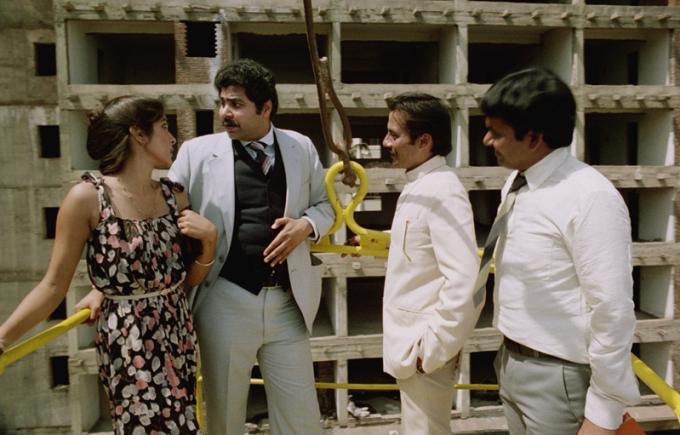
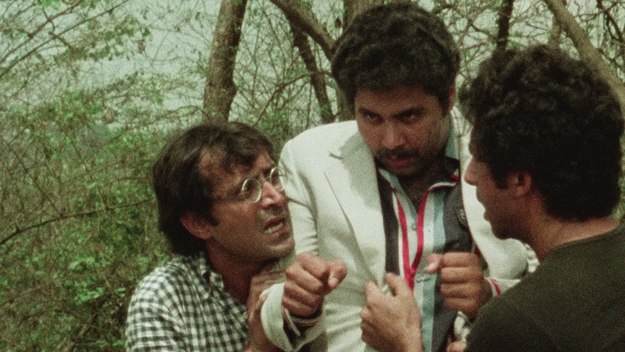
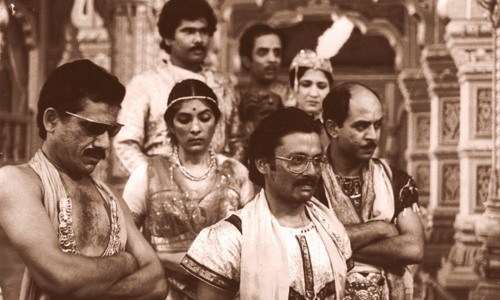
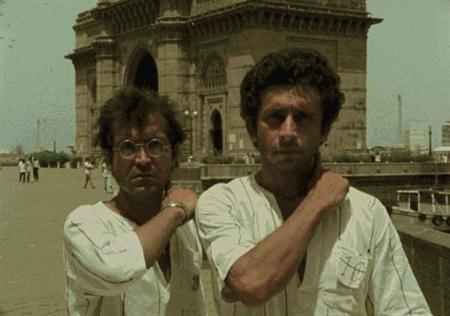
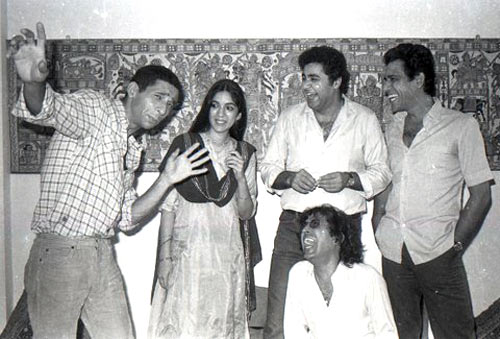
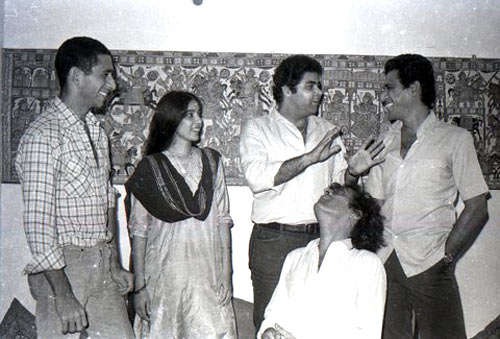
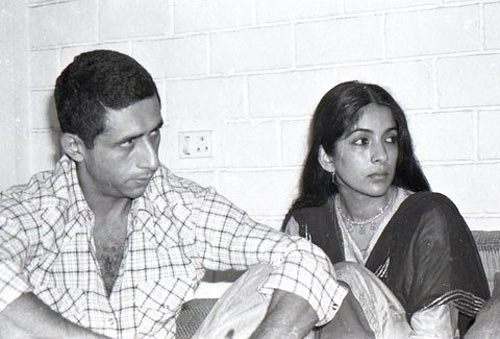
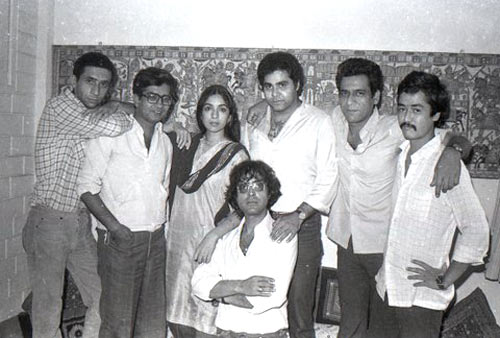
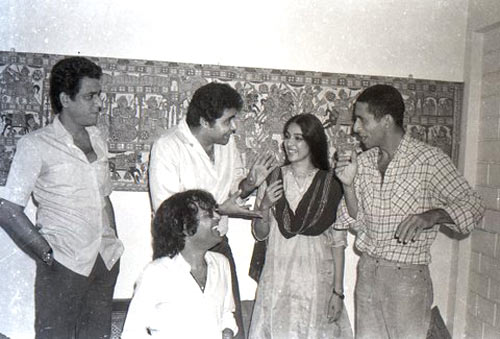
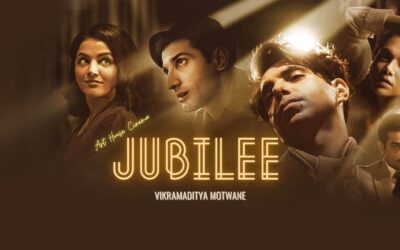
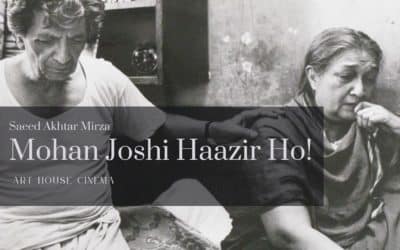
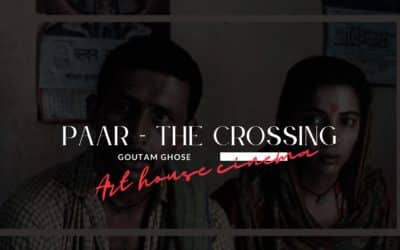

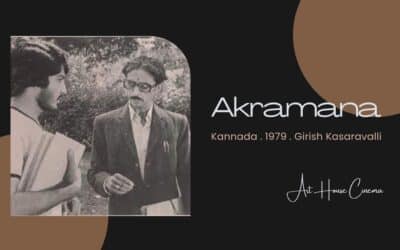
Classic of Hindi Cinema. Gem in black comedies :-)
This was one of the best comedy movie of bollywood. The funiest part was the stage show. tOO Good.